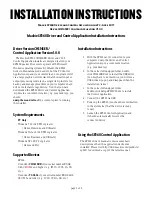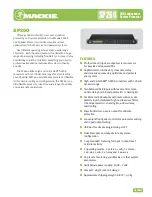
4-21
VPN Acceleration Module 2+ (VAM2+) Installation and Configuration Guide
OL-5979-03
Chapter 4 Configuring the SA-VAM2+
Configuration Examples
For a detailed description of the information displayed by the
show
commands, refer to the “IP Security
and Encryption” chapter of the
Security Command Reference
publication.
Configuration Examples
This section provides the following configuration examples:
•
Configuring IKE Policies Example, page 4-21
•
Configuring IPSec Configuration Example, page 4-21
•
Configuring Compression Example, page 4-22
Configuring IKE Policies Example
In the following example, two IKE policies are created, with policy 15 as the highest priority, policy 20
as the next priority, and the existing default priority as the lowest priority. It also creates a preshared key
to be used with policy 20 with the remote peer whose IP address is 192.168.224.33.
crypto isakmp policy 15
encryption 3des
hash md5
authentication rsa-sig
group 2
lifetime 5000
crypto isakmp policy 20
authentication pre-share
lifetime 10000
crypto isakmp key 1234567890 address 192.168.224.33
Configuring IPSec Configuration Example
The following example shows a minimal IPSec configuration where the security associations will be
established via IKE:
An IPSec access list defines which traffic to protect:
access-list 101 permit ip 10.0.0.0 0.0.0.255 10.2.2.0 0.0.0.255
A transform set defines how the traffic will be protected. In this example, transform set "myset1" uses
DES encryption and SHA for data packet authentication:
crypto ipsec transform-set myset1 esp-des esp-sha
Another transform set example is "myset2," which uses Triple DES encryptions and MD5 (HMAC
variant) for data packet authentication:
crypto ipsec transform-set myset2 esp-3des esp-md5-hmac
A crypto map joins together the IPSec access list and transform set and specifies where the protected
traffic is sent (the remote IPSec peer):
crypto map toRemoteSite 10 ipsec-isakmp
match address 101
set transform-set myset2
set peer 10.2.2.5









































